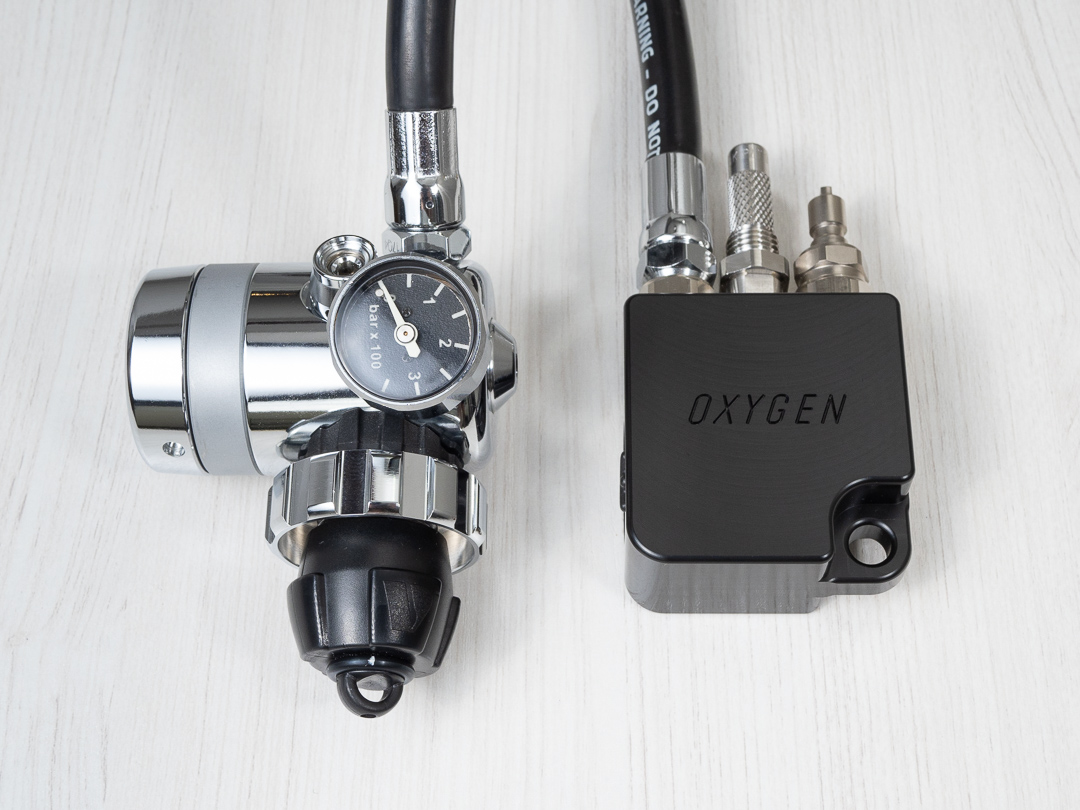
This document was last updated on May 29th, 2021
The heart of any rebreather is its oxygen addition system. CCRs are broadly categorized as either electronic (eCCR) or mechanical (mCCR), which refers to how they add oxygen. While FATHOM designer, Charlie Roberson, had done demanding dives on an eCCR, there were several aspects that troubled him, not to mention the fact that he had seen a lot of divers missing dives due to faulty electronics. Arguably, the safest way to dive an eCCR is manually with the solenoid set at a low set-point. In this mode, the diver manually adds oxygen to maintain a desired setpoint and the solenoid only fires if the diver fails to do so. This method is a lot of work and can add task-loading to an already complex dive. The other option is to allow the solenoid to do the work while the diver simply monitors the system. This method can lead to complacency as the diver comes to rely on the reliability of the electronics. Charlie believed that there had to be a better way.
KUR diver Brett Hemphill had done a series of deep exploration dives at Weeki Wachee on his modified KISS Classic using a needle valve and was a big proponent of the system. The needle valve has all the advantages of a fixed-orifice constant mass flow (CMF) system with few, if any, of the drawbacks. Unlike the Pelagian DCCCR, which uses a needle valve with a standard depth-compensated first-stage, the FATHOM CCR follows Brett’s lead and employs a needle valve with a blocked non-compensated Apeks DS4 first stage, creating an adjustable CMF system. This eliminates the need to constantly adjust the needle valve with depth changes. Once the needle valve is dialed into the diver’s metabolic needs, it only needs to be adjusted when those needs change, such as swimming versus scootering.
The only real drawback of a CMF system is a depth limitation that is reached when the first-stage intermediate pressure is equal to the ambient pressure. For example, a CMF system with a 145 psi/10 bar intermediate pressure (IP) has a practical depth limit of 260 fsw/81 msw [1]. The Fathom CCR addresses this by modifying an Apeks DS4 with a stronger spring that allows for much higher intermediate pressures. The first-stage intermediate pressure is set from the FATHOM factory at 205 psi/14 bar for a practical depth limit of 395 fsw/120 msw. If a deeper maximum depth is needed, the intermediate pressure can be increased in the field to 290 psi/20 bar for a practical depth limit of 585 fsw/177 msw. Low pressure hoses rated for 400 psi/27.5 bar are used to safely handle the increased pressures.
Smaller fixed-orifices can also be used for deeper depths with higher intermediate pressures but the risk of a blockage is increased and the options are limited by orifice availability. A fixed-orifice requires that the first stage intermediate pressure be adjusted to achieve a flow rate that corresponds to the diver’s metabolic needs, typically around 0.6 to 0.8 L/min. Conversely, the needle valve allows the first-stage intermediate pressure to be set to any pressure since the needle valve handles the flow adjustments. More importantly, the needle valve minimizes the risk of a blockage from debris since it can be opened up to allow small particles to pass. The oxygen MAV, which contains the needle-valve, is ported directly into the exhaust side of the head so oxygen must travel through the scrubber and mix with loop gas before reaching the diver.
1 (145 psi/14.7 psi/ata – 2 ata) x 33 fsw/ata = 260 fsw (Note: always subtract 2 ata when calculating the maximum operational depth of a CMF system.)